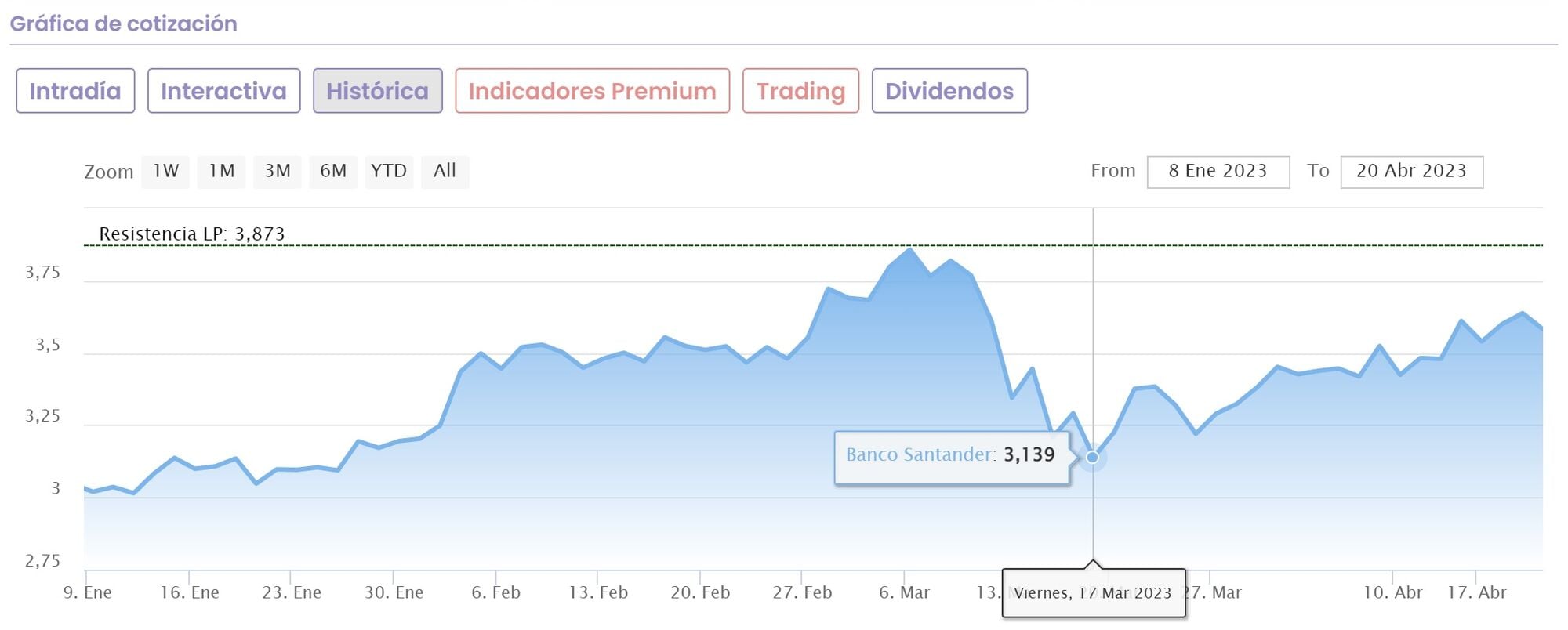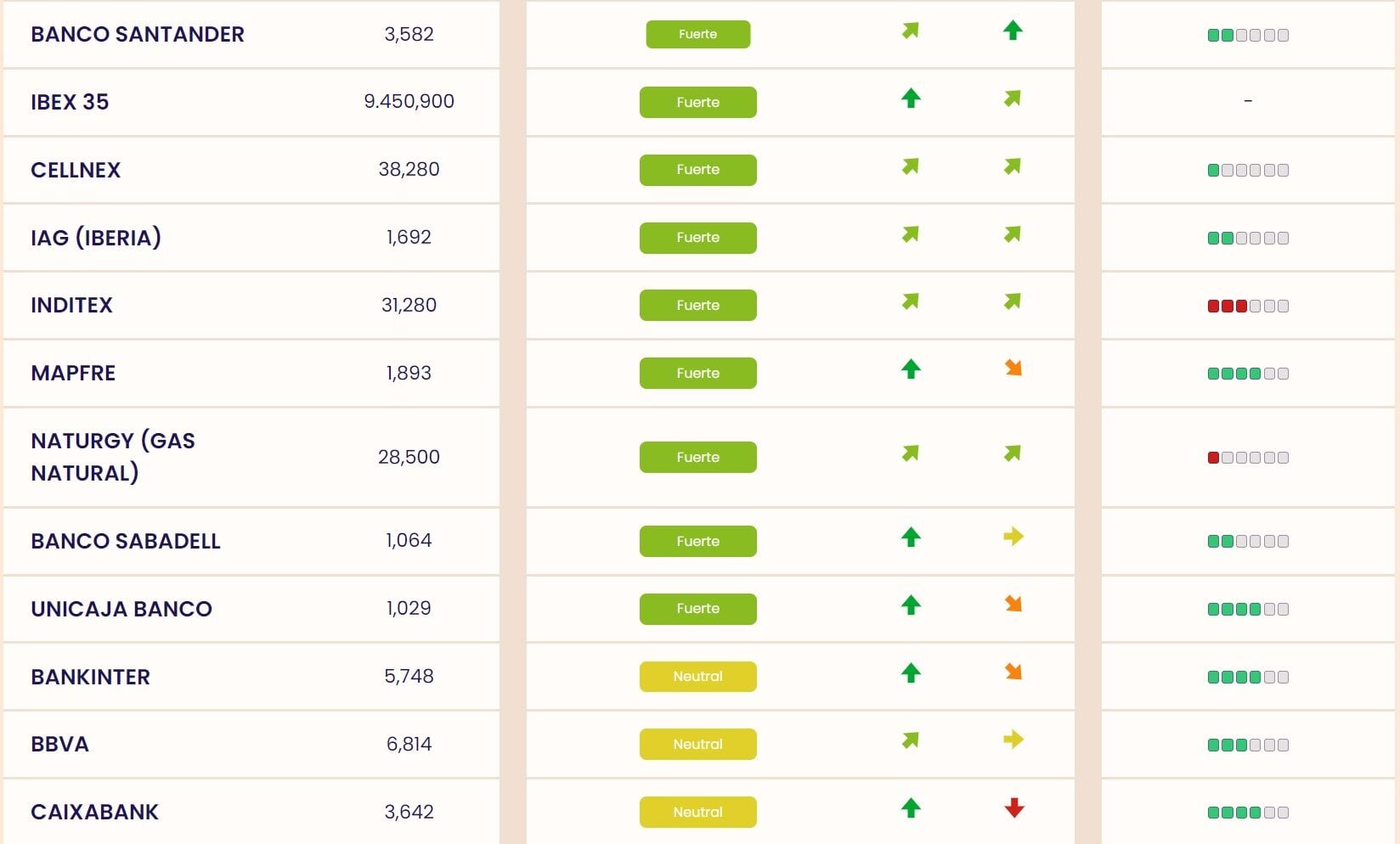“I to the Spanish banks I see them well in the result presentationsI believe that the financial sector’s workforce adjustments, branch closures and overall cost adjustments have significantly improved its profitability and solvency metrics,” said Rafael Ojeda, Global Macro Analyst at Fortage Funds.
The expert adds that the tightening of legislation after the last crisis, together with the caution that financial institutions have shown in taking risks since then, means that banks are in dire straits Solvency situation and optimal liquidity ratiosespecially compared to other countries like the United States.
“I think the results will be good as rate hikes will benefit banks due to intermediation costs,” says the expert. The bank has started charging commissions for certain services since last year, increasing its profitability. The current risk is an increase in arrears, which will remain at a minimum for the time being.
Banco Santander has published positive messages for investors, such as that it will do so Increase in payout from 40 to 50%. It’s buying back shares, which is also a positive.
In general, the analyst is positive on the financial sector, although he stresses that if banks are finding a bump right now, it will be in the macro data. Regarding rate hikes, he points out that while rate hikes are good for them, they shouldn’t go too high as very high rates can have a negative impact on the economy, which ultimately affects banks.
“What would be very good for the financial sector is if interest rates don’t go up much further or even go down a bit.”
You have to remember that, emphasizes the expert The banking and financial sector has a lot of weight in the Capricorn 35, Therefore, the good performance of the banks will also make the Ibex 35 behave positively.
After the falls in March
We’ve already seen the Bankinter accounts that were positive and liked by the market, according to iBroker Market Specialist Antonio Castelo. The company has presented some numbers that have performed well despite the Spanish government’s sanctioned bank tax.
As for the other banks, it’s Banco Santander’s turn next week. “Santander and BBVA are catching these events very close to the highs they had before the financial crisis (caused by the collapse of the SVB in March); CaixaBank is further away and of course Banco Sabadell and Bankinter who have suffered the most,” says the expert.
As we can see in the chart, after the March lows, Banco Santander has recovered in the face of the crisis that has hit financial institutions:

The results campaign for the banks, emphasizes Castelo, comes with good prospects. “Inflation can have a negative impact on operating costs, but the banks have managed that quite well.” In the case of Santander and BBVA, we need to see the negative impact that the exchange rate can have since a large part of their business takes place outside of Spain.
“I’m optimistic about the sector I think figures as good as 2022 will not be presented in 2023 as a whole, but the upside is that their multiples will be less stressed after the sharp falls in March, especially in domestic banking,” the expert concludes that we will see a good year for banks.
For Araceli de Frutos, from Araceli de Frutos EAFI, the banking sector will show positive numbers overall. In Santander’s case, “if it continues on analyst-discounted progress,” it would hit its 15% RED target by 2023. It will also be necessary to monitor the rate of non-performing loans and the development of retail deposits. But overall the prospects are positive.
Next week it will be Santander, Sabadell, BBVA and Unicaja and the following week Caixabank will present their figures. Check here the earnings calendar of the Ibex 35 companies for the first quarter of 2023.

The Premium Strength Indicators of Investment Strategies show that right now the strongest of the banks is Santanderwith a “strong” rating, while the rest of the companies in the index are “strong”, such as Sabadell and Unicaja, and neutral for Bankinter, BBVA and Caixabank.